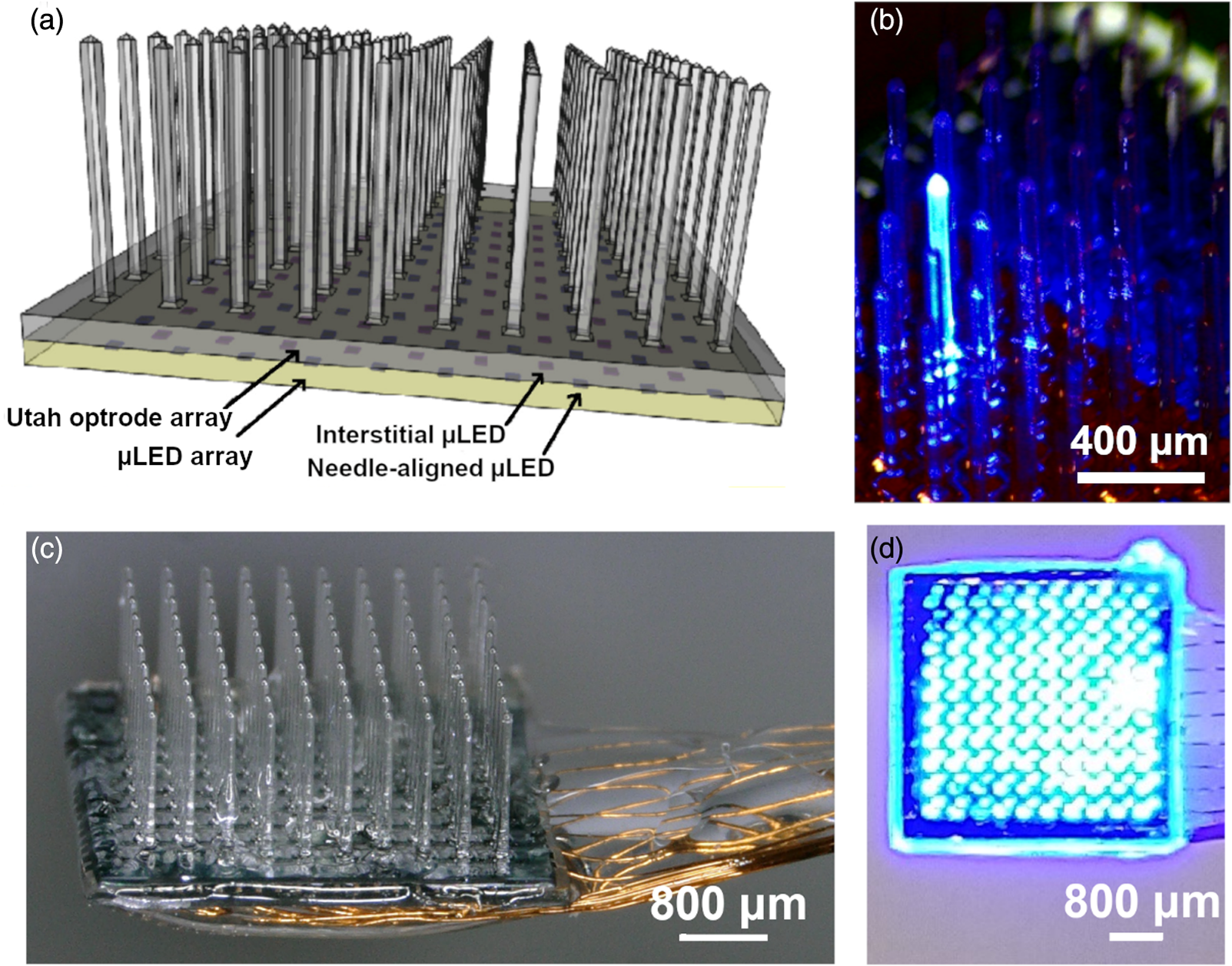A research team formed by specialists in photonics, electrical and computer engineering and medicine jointly developed a device which integrated a 10x10 array of glass microneedles with Micro LED to deliver light for stimulating neurons in brains of mammals.
Researchers from the University of Strathclyde, University of Utah and Fienstein Institute for Medical Research aim to advance optogenetic studies by connecting neural activities to specific cognitive functions in large mammals.
In the study, the researchers combined a glass microneedle array with a custom fabricated Micro LED device which delivers light to 100 needle tips and 81 interstitial surface sites to giving two-level optogenetic excitation of neurons in vivo. The device incorporates 181 units of 80 μm × 80μm Micro LEDs in an array on a 150-μm-thick GaN-on-sapphire wafer, coupled to a glass needle array on a 150-μm thick backplane.

(Image: McAlinden et al. 2019)
The research team said that the Micro LED integrated device provide 181 individually addressable illumination sites that enable high-resolution and large volume stimulation by controlling the drive current. The ability solved the difficulty of pairing light delivering with the tested area, offering the potential for new mammal behavior studies.
The research, titled "A Multi-site Micro LED Optrode Array for Neural Interfacing," was published in SPIE publication Neurophotonics and was funded by the NIH through the US BRAIN Initiative.












